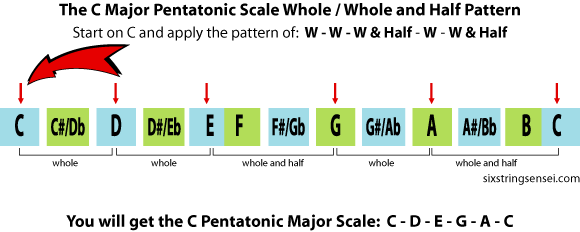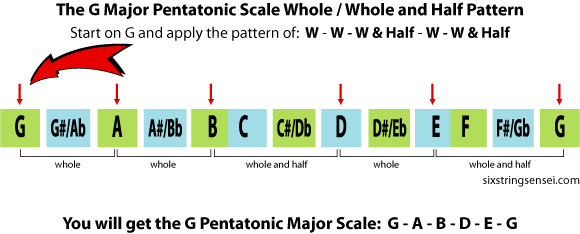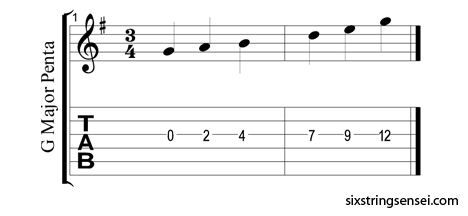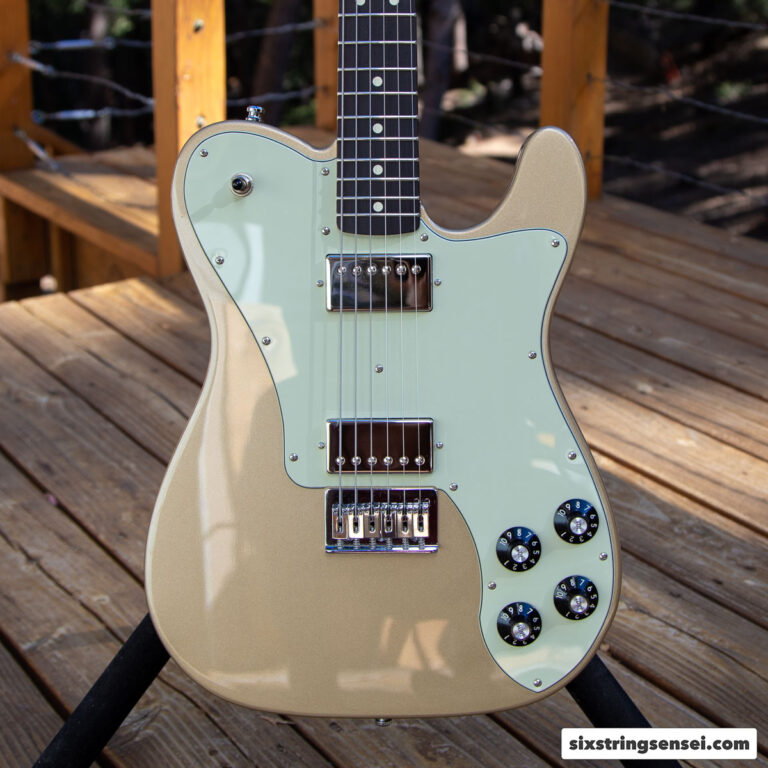Pentatonic Major Scale Intro
Pentatonic Major Scale – A very popular scale
Quick Pentatonic Intro…
There is a reason why I chose to write this lesson after I had written the Major Scale lesson in this site. There is also a reason I’m placing it under the Major Scale lesson in terms of order in the lesson list. I, like most guitarists learned the Pentatonic Scale first. It’s the easiest and most used scale in rock music. It offers a good starting point for many guitarists, but unfortunately, breeds many lazy axe-slingers as well. Many aspiring guitarists will learn this scale, realize they can now wing out a half-decent solo, and suddenly become lazy and never learn another scale again. Well, you guys are not going to be like that! After I learned the Pentatonic Scale, I decided I wanted to be a “better-than-average” guitarist. So I made sure I learned all 5 positions of the scale and then moved on into the major and minor scales. I recommend you do the same. If you can start with the Major Scale and then move on to Pentatonics, even better!
Ok, so let’s begin… The Pentatonic Scale is basically a scale of 5 notes. “Penta” means 5, while “tonic” means TONES (although for some it’s some sort of drink or a facial creme). Since the scale has 2 notes less than the Major Scale, logically, it ends up being easier to learn. Not only that, but the the 2 notes that are missing are the notes that have to be used more carefully during soloing as they don’t necesarilly sound that great with certain chords. So instead of being careful and playing those notes only where they belong, somebody simply decided take those out altogether and create a scale without those notes and thus, easy to play.
You may already know there is a Pentatonic Major and a Pentatonic Minor Scale. One thing you need to understand is that there is a very important relationship between Major and Minor Scales. Due to that relationship, both scale patterns are one in the same. You simply need to know where to apply those patterns and in what order. This applies to both the Major and Minor Scales as well, not just the Pentatonics.
Another important point to understand is that being able to play a solo using a Pentatonic Scale and carefully adding the missing notes to complete the scale (major or minor) will greatly improve your playing and will make your solos more interesting. This approach works really well when easing into playing complete scales. If you know where these extra notes go, you can continue improvising using a Pentatonic Scale and then simply insert the other 2 notes where they will sound good.
Like I said earlier, the Pentatonic Scale has 5 notes. So, for that same reason it has 5 different patterns that can be played up and down the neck in any key. Due to the relationship between the Major and Minor Scales, if you learn the 5 patterns for the Major Pentatonic Scale you have also learned the 5 patterns for the Minor Pentatonic! Now isn’t that nice! All you have to know is the correct order of the patterns, and with which pattern to begin with if you are playing in a Major or Minor key. Then, simply by knowing in what Major or Minor key (root note) any given song is in, and applying the correct pattern to that root note you can begin improvising solos!
The formula for the Major Pentatonic Scale
If you’re new to the concept of formula patterns of Whole/Half Steps you should go to my Major Scale Basics Lesson were I go more in depth on this particular topic.
The formula for the Major Pentatonic Scale is the following:
Whole – Whole – Whole & Half – Whole – Whole & Half
If you apply this formula to the chromatic scale you will get the notes of the major pentatonic scale. The diagram below shows the application of the formula starting on C to get the C Pentatonic Major:

In keeping with the order of these lessons we will do the same thing for the key of G since it’s the key we are using for most of the examples. Here is the same example, but starting on G, to produce the G Pentatonic Major:

Finally, take a look at the following diagram to see same G Major Pentatonic Scale in Tab. It’s played on only one string starting on an open G and ending on the G of the 12 fret.



